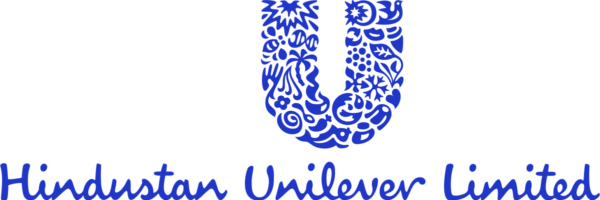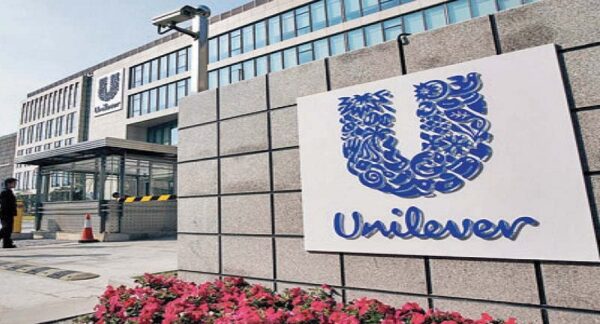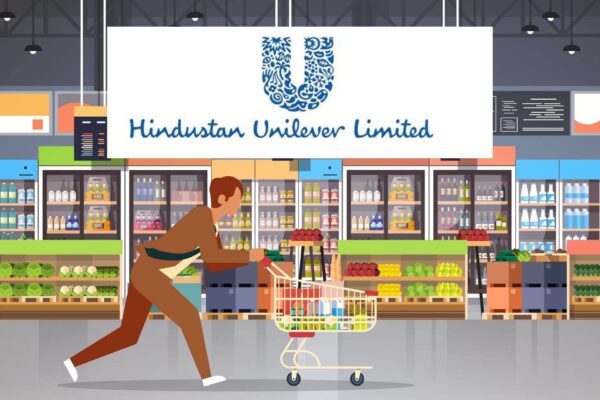Hindustan Unilever’s net profit rises 13.6%, beats expert predictions

Hindustan Unilever’s net profit rises 13.6%, beats expert predictions
Hindustan Unilever today beat analyst expectations by reporting a 13.6 per cent increase in net profit to ₹2,381 crore in the first quarter of 2022-23, as compared to ₹2,097 crore in the same quarter last year.
The company’s revenues too went up 19.5% to ₹14,331 crore from ₹11,996 crore in the comparative period, even as most analysts estimated a 14% growth.
“We have again produced strong topline, and bottom line performance in a challenging environment that is characterised by extraordinary inflation and its attendant impact on consumption,” the company shared.
Volumes too surged 6 per cent against expectations of 4 per cent, possibly on a low-base effect. But, its EBITDA margins fell by 1.1 per cent as compared to last year. HUL said it was still at 23.2 per cent despite the exceptional escalation in input costs.
Fabric washing and household care contributed to a 30 per cent gain in HUL’s home care business, which continued to be its strongest performer. The company stated that price hikes were calibrated throughout the fabric wash and household care portfolios because input prices are still rising.
Its food and beverage division saw a 9 per cent increase in revenue during the quarter due to good results in the ice cream, coffee, jams, and food solutions industries.
The industry suffered during the pandemic years, and the first uninterrupted quarter in the last two years was Q1FY23.
On a yearly and sequentially basis, profits fell 4 per cent and 19 per cent, respectively, in the food industry, the only one to do so.
“Strong YoY growth was achieved in the skincare and colour cosmetics sectors on a soft basis. The performance of the premium skincare portfolio was strong and is much above pre-Covid levels. To counteract the effects of record input cost increases, calibrated pricing actions were implemented across the portfolio,” HUL said in a press release.

About Hindustan Unilever
Located in Mumbai, India, Hindustan Unilever Limited (HUL) is a British-Dutch manufacturing company. The products of Hindustan Unilever Ltd. include foods, beverages, cleaning agents, personal care items, water purifiers, and consumer goods. Lever Brothers were the original name of HUL when it was founded in 1933. After its constituent groups merged in 1956, HUL was renamed Hindustan Lever Limited. In June 2007, the company adopted the new name “Hindustan Unilever Limited.”
The Hindustan Unilever Limited portfolio had 35 products labelled in 20 categories at the beginning of 2019 and employed 18,000 representatives with offers worth Rs. 34,619 crores in 2017–18. In December 2018, HUL announced that it had paid $3.8 billion for the India operations of Glaxo Smithkline out of a total merger manage ratio of 1:4.39.
However, the inclusion of 3800 GSK representatives remained in doubt since, according to HUL, there was no provision in the agreement for worker maintenance. HUL said it hoped to complete the merger with Glaxo Smith Kline Consumer Healthcare (GSKCH India) in 2019. This statement was made in January 2019.
Hindustan Unilever’s journey
The company entered the ayurvedic health market in 2002 with its Ayush product line and Ayush therapy facilities. The Amalgam Group of Companies, a pioneer in the sale of marine products, sold their Cooked Shrimp and Pasteurized Crabmeat business to the organisation in 2003. The company helped Hindustan Unilever Network Direct launch a home business. The company introduced the “Pureit” water purifier in 2004.
In 2005, Unilever merged Lever India Exports, Lipton India Exports Ltd, Merry Climate Food Products, Toc Disinfectants Ltd, and International Fisheries Ltd. Vasishti Detergents Ltd (VDL) merged with Unilever in February 2006. Modern Foods Industries (India) Ltd. and Modern Foods and Nutrition Industries Ltd. were added in September 2006. Unilever sold Cap Gemini SA its controlling 51 per cent interest in Unilever India Shared Services Ltd, now known as Capgemini Business Services Pvt. Ltd, in October 2006.
Sangam Direct, a non-store home delivery retail company, run by Unilever India Exports Ltd (UIEL) and a fully owned subsidiary, was transferred to Wadhavan Foods Retail Pvt Ltd (WFRPL) in a slump deal business in March 2007. The demerger of Unilever’s operational offices in Shamnagar, Jamnagar, and Janmam was completed, and three independent companies were created: Shamnagar Estates Ltd., Jamnagar Properties Ltd., and Hindustan Kwality Walls Foods Ltd. The company’s name was changed from Hindustan Lever Ltd to Hindustan Unilever Limited in June 2007.
Through the Pepsodent brand, the organisation announced in 2008 that it has collaborated with the Indian Dental Association (IDA) in relation to the World Dental Federation (FDI) to raise standards for oral hygiene and cleanliness in India. The company demerged in April 2008, and some immovable properties were transferred to Brooke Bond Real Estates Pvt Ltd. The company unveiled its new corporate office in January 2010.
Unilever announced its intention to merge with Bon Ltd, a wholly owned subsidiary of Hindustan Unilever Limited, in April 2010. The last mentioned strategy was chosen for implementation on April 1, 2009, and became effective on April 28, 2010. After the merger, Bon Ltd ceased to support the business.
In three key classifications, Kissan entered a new market segment in 2010–2011. It fueled Kissan Fruit and Soya, a pleasant blend of soymilk and organic product juice valued as a distinct recommendation in this market. By releasing Kissan Creamy Spread in major cities, the brand entered the Indian (non-sweet) spreads market. The company introduced two new items—Chapi and Cream Rolls—in the bakery section. In exchange for the Smollan Group, the company sold its 43.31 per cent ownership in Hindustan Field Services Pvt Ltd. (the JV accomplice).s.
In December 2011, the company separated its FMCG export operations, including specific costs associated with its manufacturing facilities, under its wholly owned subsidiary, Unilever India Exports Ltd. (UIEL). On January 1, 2012, the idea was realised.

Business Model of HUL
Hindustan Unilever is an FMCG company that uses its Direct Consumer (D2C) business model and has generated over 50 billion in revenue. According to sources, in April 2022, the company’s turnover during FY21 exceeded INR 50,000 cr ($6.55 bn). The first pure FMCG brand to achieve this was HUL.
Hindustan Unilever’s business strategy is driven by the notion of making sustainable living affordable for the public.
Hindustan Unilever’s beauty and personal care division contributes the most to business profits, while the division for food and beverages is acknowledged as having the fastest expansion rate. The third of the company’s three main segments is home care.
The global reach of Hindustan Unilever and its track record of improving value for customers all around the world provide the firm with a competitive advantage.
Some of the business models of HUL are:
-
Reverse Innovation
The process of creating items for industrialised nations and then modifying them for emerging markets is known as reverse innovation. The secret weapon of HUL, which has served as a major source of inspiration for many other major businesses, is reverse innovation. The “Knorr Stock Pot” that the company created illustrates how to use reverse innovation. HUL perfected this strategy by drawing inspiration from the well-known “Dense Soup Treasure,” the first instance of reverse innovation introduced in China in 2007.
-
Focussing on the financially weak
HUL decided to focus on the economically weaker regions of the nation, which led them to focus on the bulk of the Indian market, in contrast to the other foreign companies. One instance of Hindustan Unilever producing goods for most Indian consumers is the invention of Wheel detergent powder. Wheel’s lower oil-to-water ratio allowed Indians to handwash fabrics in even rivers. The business then effectively made Wheel accessible in neighbourhood corner stores and through door-to-door salespeople.
-
Staying keen on the Triple Bottom Line
HUL has a new strategy where the brand decided to aim for the other parts, thereby caring for people and the environment. In contrast, most businesses focus on the profit element of the Triple Bottom Line with little attention to the other segments.
HUL places a strong emphasis on people, including its customers and other individuals. For instance, in response to the All Black Lives Matter movement that swept the globe, the company altered the name of one of its well-known products from “Fair and Lovely” to “Glow and Lovely.” This made HUL a fan right away!
-
Significant Distribution Strategy
Hindustan Unilever uses an excellent distribution strategy! It emphasises e-commerce, retail stores, wholesalers, convenience stores, hypermarkets, and more. This greatly aids in promoting HUL products and getting them in front of customers quickly!

Business Growth In India
Hindustan Unilever Limited (HUL), a major FMCG company, reported a 15.98 per cent increase in consolidated net benefit at Rs 6,060 crore for the fiscal year that ended on March 31, 2019 compared to Rs 5,225 crore in 2018. HUL’s FY21 net profit, which was Rs 7,954 crore, increased by 18% YoY.
Sanjiv Mehta, the chairman and managing director of HUL, commented on the earnings by saying, “Despite some balance in the development of the rural market, we were able to deliver a strong performance for the quarter. Our efforts to strengthen the centre and improve the business sector have consistently produced excellent results. Our 2019 results were a testament to our strategy and execution, and we have now developed top line and the main concern for the eighth consecutive year.”
“The large-scale financial pointers have set the direction of short-term advertising development. Despite this, the outlook for the medium term is still favourable. As a group, we are in a good position to respond quickly and nimbly to the needs of our clients. We remain committed to implementing our crucial aim to deliver predictable, targeted and reliable development,” he included.
The firm stated that the total profit for the financial year ended on March 31, 2019, comes out to Rs. 22 for each offer. This includes the between-time profit of Rs. 9 for each offer. HUL reported in a document to the Bombay Stock Exchange that “Combined income for 2018-19 remained at Rs 39,860 crore, up from Rs 36,622 crore a year earlier.”
HUL expanded by 12 per cent in India thanks to volume growth in home advertising by 10%. Comparing the January-March quarter to the same quarter a year prior, the organisation reported a 13.84 per cent increase in its independent net benefit at Rs 1,538 crore. The company’s offers remained at Rs 9,809 crore in Q4FY19, up from Rs 9,003 crore in Q4FY18, representing an 8.95 per cent growth. Working profit (EBITDA) increased by 13 per cent yearly to Rs 2,321 crore, and the EBITDA edge increased by 90 basis points.
Challenges Ahead Of Hindustan Unilever
According to the company, the edge improved due to careful management of cost instability (unrefined and money-driven), improved mix, and working influence.
Earnings before interest, taxes, depreciation, and amortisation (EBITDA) for HUL were reported to be Rs 11,324 crore, with a claimed EBITDA margin of 25% for FY21.
Due to value increases across all classes, Hindustan Unilever NSE 0.01 per cent (HUL) may achieve 9–10% growth in the June quarter benefit despite a slight volume balance. IIFL Institutional Equities anticipates the FMCG industry leader reporting a volume development of 6%, a modest decrease from the volume development of 7% seen in the last quarter.
“We project a 6% rise in volume and account for transaction growth of 7% for near-home consideration components and 11% for house consideration components. The research suggested that EBITDA edges would increase to 24.3 per cent from 23.7 per cent the year before due to lower advertising spending and control over many overheads. According to Edelweiss, income, Ebitda, and benefit development are expected to be 7.3%, 8.6%, and 7.7% YoY, respectively.
“We expect HUL’s volume to increase by 5% YoY on a strong foundation of YoY improvement. GST distribution impacted Q1FY18; thus, the best way to look at volume growth is to use the three-year average, which will be 5.6 per cent. The delicate quality that was present in the second half of Q4FY19 continued for the entire quarter in Q1FY20. Presently, provincial development is at a par with urban development. A 2.5 per cent mixed value increase has been made. On the EBITDA edge front, we see a 20–30 bps YoY growth,” the business said.
edited and proofread by nikita sharma




